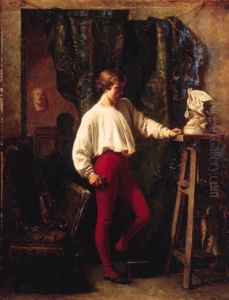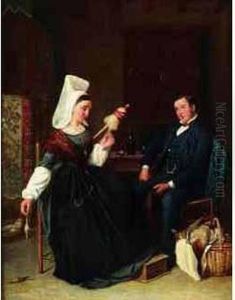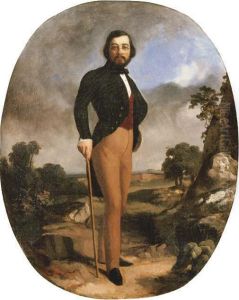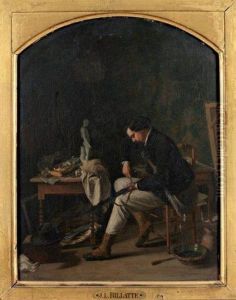Leon Joseph Billotte Paintings
Leon Joseph Billotte, born in 1855 and passing in 1926, was a French artist whose work, while not as widely recognized as some of his contemporaries, contributes significantly to the tapestry of 19th and early 20th-century European art. His life spanned an era of considerable change in the art world, from the late Romantic period through the Impressionist movement, and into the beginnings of modernism. Despite this, Billotte's style remained relatively consistent, focusing on landscapes, portraits, and still lifes with a traditional approach that emphasized detail, composition, and the interplay of light and shadow.
Billotte's artistic journey began in earnest with his education at the École des Beaux-Arts in Paris, a prestigious institution that nurtured many of the period's leading artists. Under the tutelage of established masters, he honed a technique that combined the academic rigor of his training with a personal sensitivity to his subjects. This duality allowed his work to resonate with both critics and the public, securing him a place in the Salon exhibitions that were the cornerstone of an artist's reputation and success in France at the time.
Throughout his career, Billotte exhibited a keen interest in capturing the essence of his environment, whether it was the bustling streets of Paris, the serene countryside of rural France, or the intimate setting of a domestic interior. His landscapes, in particular, are noted for their ability to convey not just the visual beauty of nature but also its emotional and atmospheric qualities. This sensibility aligns him with the Barbizon School and the Impressionists, though he never fully embraced the latter's avant-garde techniques or their rejection of traditional themes.
Despite his achievements and contributions to French art, Leon Joseph Billotte remains a somewhat obscure figure today. His reluctance to align himself with any particular artistic movement may have contributed to this relative anonymity. However, for those who delve into his oeuvre, Billotte offers a rich exploration of 19th-century life and landscapes, rendered with technical skill and a deep appreciation for the world around him. His death in 1926 marked the end of a career that, while perhaps not revolutionary, was undeniably marked by a profound love for painting and a commitment to artistic excellence.



